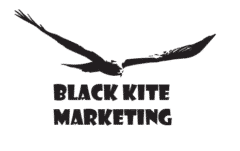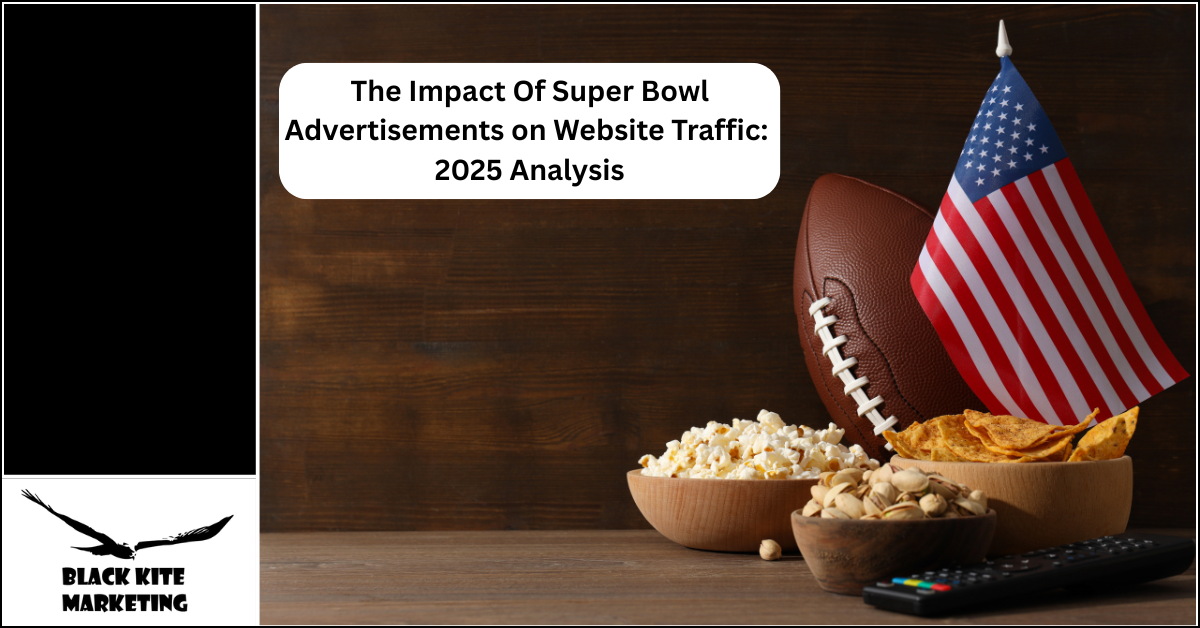
The Impact Of Super Bowl Advertisements on Website Traffic: 2025 Analysis
Discover what we learned from researching top performing domains on Google Trends, using SEMrush organic traffic tools.
NFL’s big game remains the preeminent advertising stage in the U.S., commanding record-high prices for ad slots due to its massive viewership. While the cost for a 30-second spot is substantial, advertisers across various categories leverage this platform to drive mid-funnel results. Particularly, brands see a surge in consumer action like search.
However, the rise in search activity is not necessarily reflected in the conversion rate. Research suggests that releasing Super Bowl Advertisements early, rather than waiting for super Sunday, can significantly enhance their impact by generating buzz, increasing exposure, and fostering audience familiarity. Broadcast TV, including big game advertising, continues to be a crucial driver of consumer awareness and influences online search behavior across all stages of the purchase funnel.
Why Early Release Super Bowl Advertisements Work
Sports Illustrated considers the big game as the “single-biggest event in America each year, with millions of people tuning in to watch the game itself, the halftime show and the commercials.” Furthermore, they refer to Super Sunday as the “only time people actually get excited about ads.” Despite the high cost, major companies consistently line up to advertise, citing the massive reach.
A recent report from VAB asked the question: “How much do Super Bowl ads drive consumer action, like search?” Their analysis of Google Search Trends for 15 advertisers (representing various categories like ‘First Time’ advertisers, ‘Consistent’ advertisers, ‘Challenger Brands’, etc.) demonstrates that “The Super Bowl delivers outsized mid-funnel results for all types of advertisers across a variety of marketing strategies.”
For each of the 15 highlighted advertisers, the VAB report shows a significant spike in Google Search Index on Super Bowl week compared to the week prior and often exceeding the highest search week in the past 12 months. Examples include:
Cirkul (First-Time Advertiser): Search increased almost 8x on Super Bowl night vs. week prior and was 3.5x higher than the second highest week over the last 12 months. Garrett Waggoner, CEO & Co-Founder of Cirkul, stated their goal was “to introduce the brand to the next level, and our first Super Bowl ad is the perfect way to kick that off.” (VAB Slide 5)
Bud Light (Consistent Advertiser): Search increased 3x on Super Bowl night vs. week prior and was 67% higher than the second highest week over the last 12 months. Todd Allen, SVP of Marketing, Bud Light, noted they wanted to lean into humor on the “bigger stage to make people laugh…than the Super Bowl.” (VAB Slide 6)
Similar significant search increases were observed for brands across various categories, including Stella Artois, Liquid Death, Michelob Ultra, Poppi, and Tullamore D.E.W. (VAB Slides 8-19).
Research by System1, cited in The Drum, reveals that “waiting until game day offers no significant advantage.” Releasing a Super Bowl ad early “increases the number of eyes that see the ad and increases the chances that audiences are already familiar with the story before kickoff.” Early releases help brands “build momentum and mental availability before the big day, as well as triggering short-term responses, like web traffic and sales.”
Analysis of past Super Bowl ads showed that a majority of top-performing commercials were released early, and these ads even delivered “greater long-term brand impact than those that aired exclusively during the Super Bowl itself.” (The Drum)
Michelob Ultra’s “Superior Beach,” the top-performing ad in Super Bowl LVIII (2024) according to System1, was released in early February. (The Drum)
Early release allows brands to:
- Generate buzz and social conversation.
- Maximize exposure across multiple channels.
- Foster audience familiarity, leading to deeper emotional engagement during the game.
- Extend the lifespan of the campaign and improve ROI.
These last two are critical to the success of an advertising campaign around a tentpole event, such as the big game. In the crowded timeframe of the big day, your ad could get lost in the shuffle. Let’s look at some traffic analytics data.
Website Traffic for Super Bowl Advertisements
At Black Kite Marketing we selected beverage domains for the six months leading up to and including February 2025 shows varying levels of website visits.
The first three we are going to look at are non-alcoholic beverages:
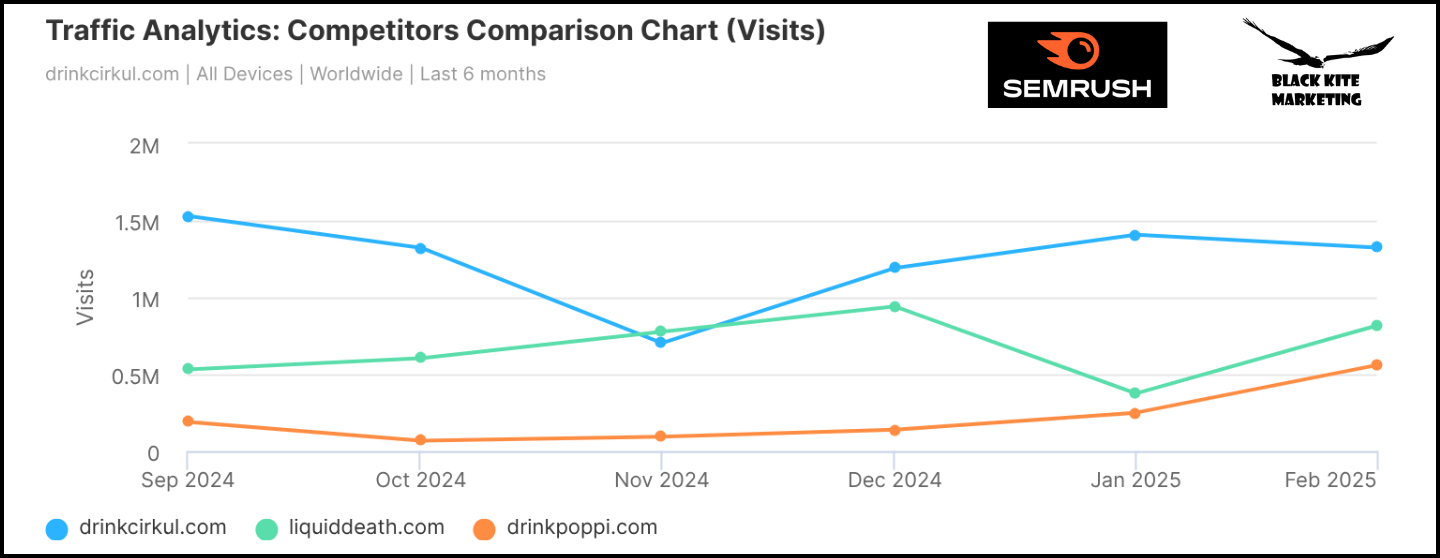
drinkcirkul.com: Generally high traffic, fluctuating between approximately 0.8M and 1.2M visits per month.
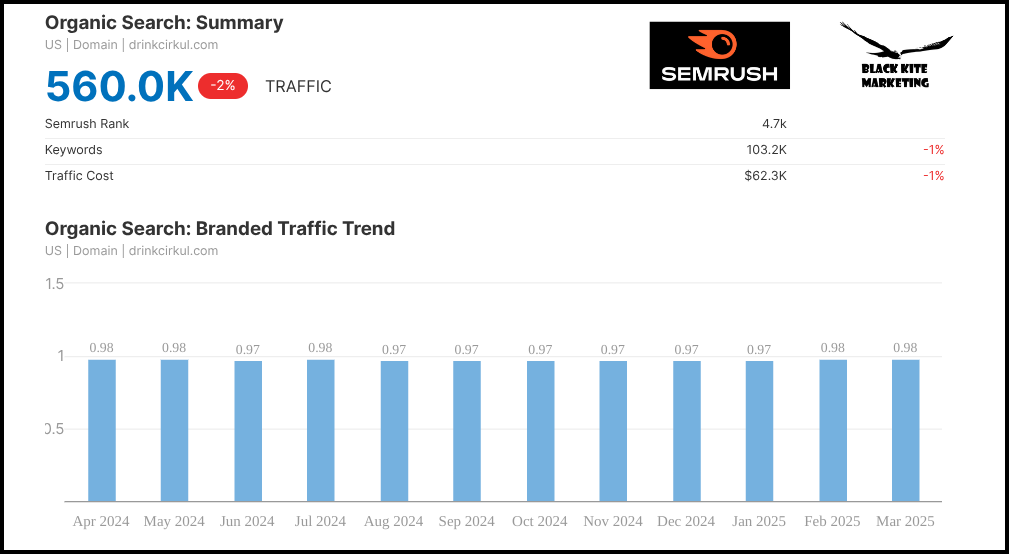
liquiddeath.com: Lower overall traffic compared to Cirkul, ranging from approximately 0.3M to 0.6M visits per month, with a noticeable dip in November 2024.
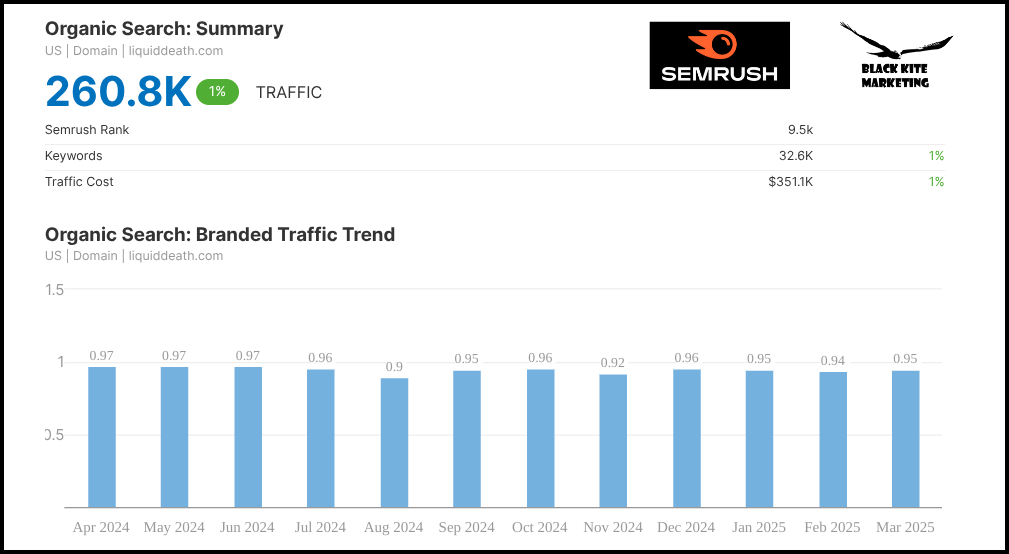
drinkpoppi.com: Similar traffic patterns to Liquid Death, generally below 0.6M monthly visits.
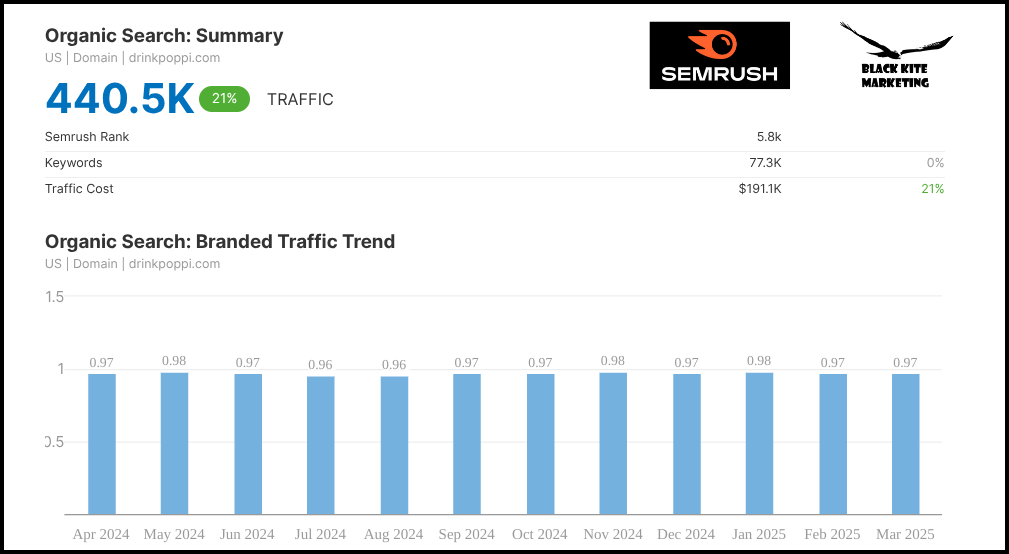
The next three are alcoholic beverages:
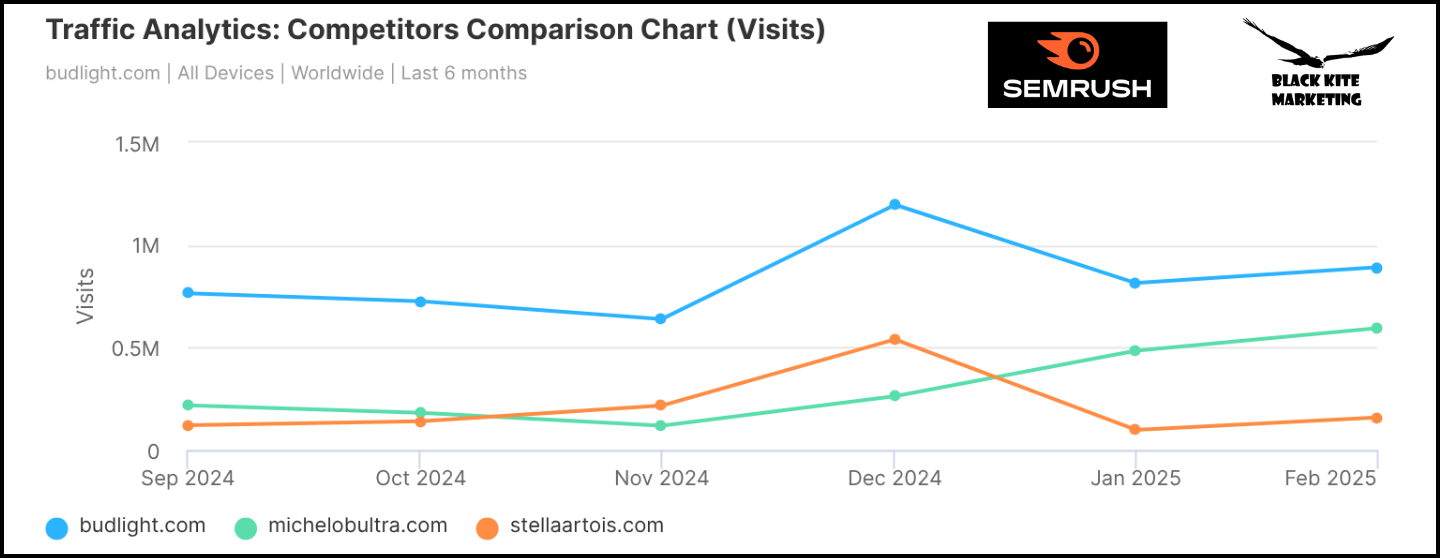
budlight.com: Traffic fluctuates, reaching peaks around 1.2M but generally lower than Cirkul in the latter part of the period.
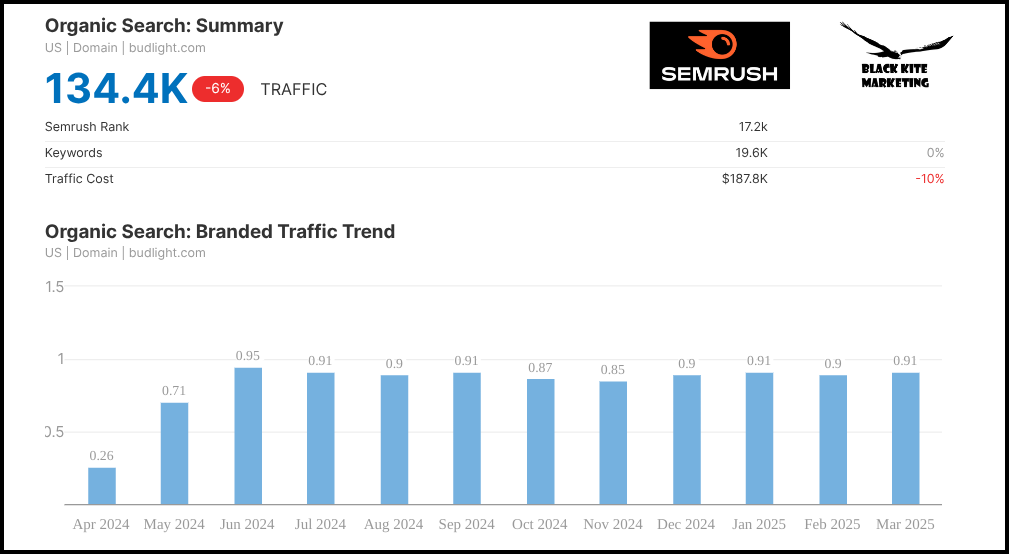
michelobultra.com: Relatively consistent traffic, generally below 0.5M monthly visits.
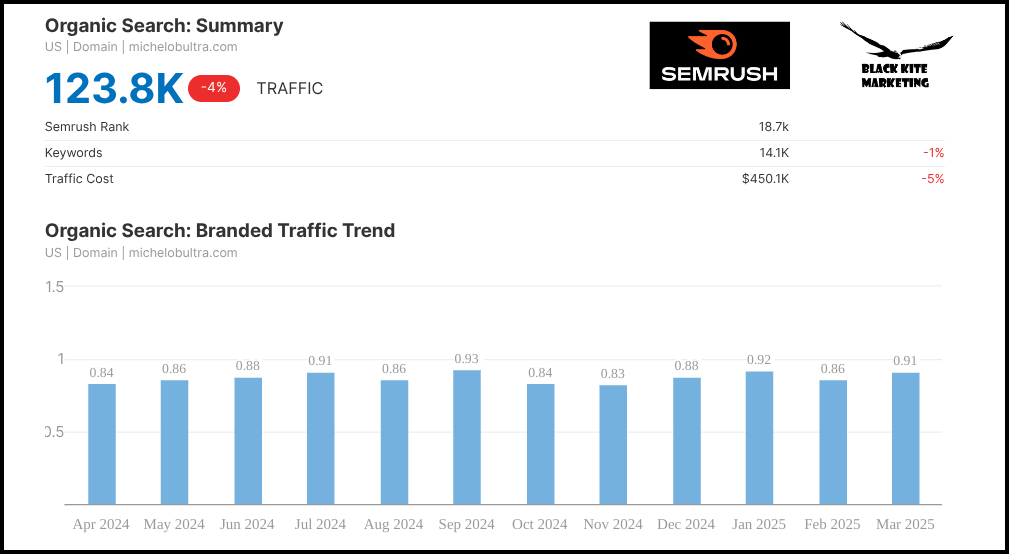
stellaartois.com: The lowest traffic among this group, consistently below 0.3M monthly visits.
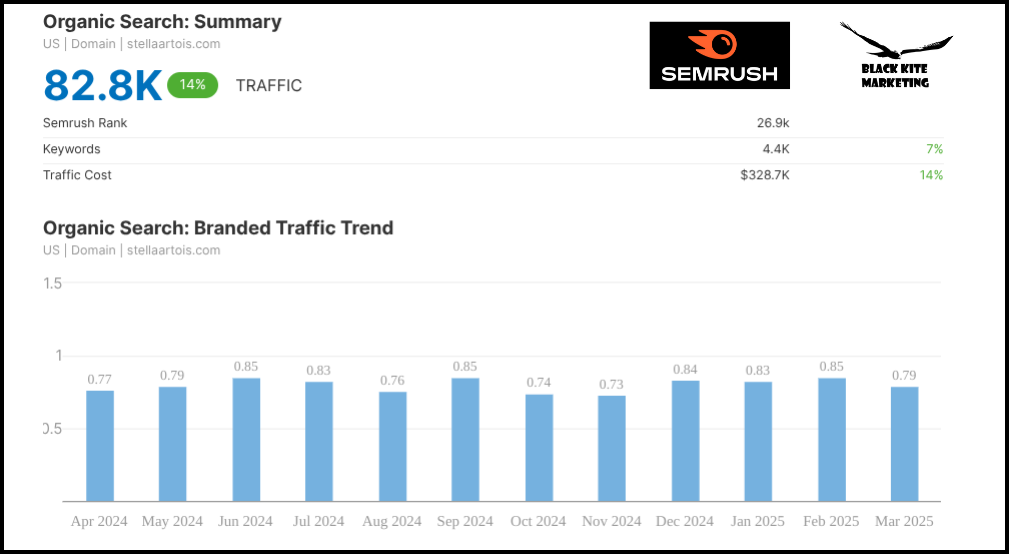
The organic search summaries and branded traffic trends for these domains provide additional insights into their online visibility, but the report does not directly correlate website traffic spikes with big game advertising impact within this excerpt.
While the trend data is indisputable, the traffic data suggests a drop off in customer intent. Are customers searching the day or two after merely looking to watch the commercials on a video platform, such as YouTube? The visits to the brand site occur when the creative for those ads are first announced and released, back in October/November.
Maximizing Creative Impact: Beyond the 30-Second Spot
In the world of advertising, a single 30-second spot is no longer enough. The most successful brands are transforming their Big Game creative into a multi-channel narrative that extends beyond game day. With a staggering $7 million price tag for a brief moment of airtime, marketers must strategically amplify their message across multiple touchpoints to truly maximize their investment.
The key to breakthrough advertising lies in early and strategic content release. Research shows that brands that preview their ads before kickoff generate significantly more audience engagement. By releasing creative content early, brands can build anticipation, spark social conversations, and create a sense of familiarity that deepens emotional connection. This approach isn’t just about increasing views—it’s about creating a comprehensive brand experience that resonates across digital and traditional media channels.
Broadcast television remains the cornerstone of this multi-channel approach, with a remarkable 82% of consumers reporting that TV ads directly influence their online search behavior. This means your Super Bowl creative doesn’t exist in isolation, but as a powerful catalyst that drives digital engagement. Brands like Cirkul and Bud Light have demonstrated the incredible potential of this strategy, seeing search volumes spike up to 8x their typical levels during the big game week. The most effective campaigns treat the Super Sunday not as a single moment, but as the centerpiece of an integrated marketing symphony.
Strategic multi-channel deployment allows brands to extend the lifecycle of their creative investment. By leveraging social media, digital platforms, and traditional media in concert, marketers can create a sustained narrative that continues to generate buzz long after the final whistle. The goal is no longer just to create a memorable ad, but to craft an immersive brand experience that captures audience attention across every possible touchpoint.
For modern marketers, the Big Game represents more than just an advertising opportunity—it’s a strategic platform for comprehensive brand storytelling. The brands that succeed are those who understand that true impact comes from a holistic approach that connects broadcast, digital, and social channels into a unified, compelling narrative.
What our research says about Super Bowl Advertising and Website Traffic
The Big Game in 2025 remains a critical platform for advertisers aiming to drive significant mid-funnel consumer engagement, particularly in the form of online search. Despite the substantial investment required, the massive reach and cultural significance of the event provide a unique opportunity for brands across diverse categories to build awareness, generate interest, and ultimately influence purchase decisions.
Strategic timing of ad releases, favoring an early launch to maximize buzz and familiarity, appears to be a key factor in amplifying the impact of these high-stakes campaigns. Furthermore, the data consistently underscores the enduring power of broadcast TV, including marquee events like the Big Game, in driving consumer awareness and directly influencing online search behavior throughout the purchase funnel.
If you would like detailed analytics for your own company website contact Black Kite Marketing! We can help you set up your reports so you receive data from Google Analytics, Google Search Console and more customized reports using our internal software.
